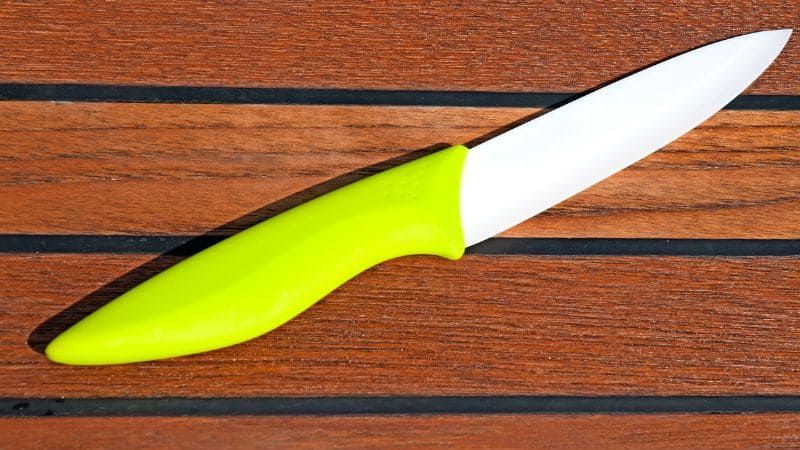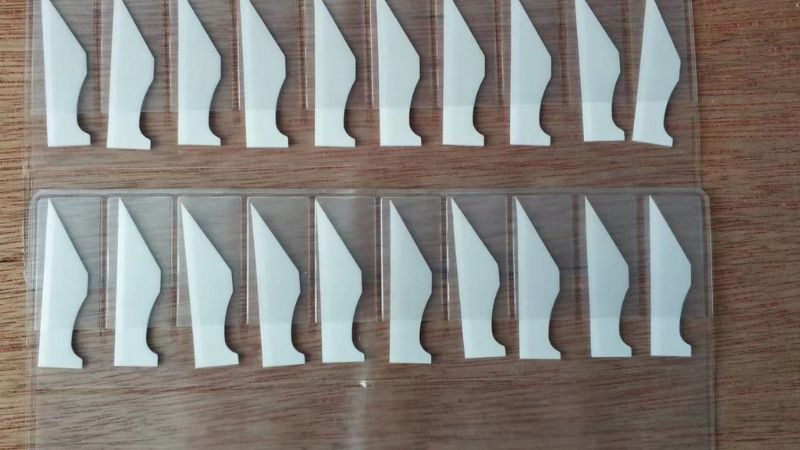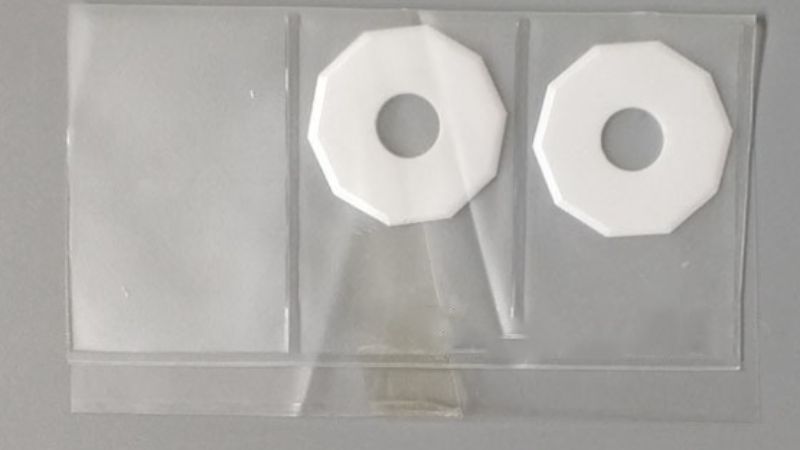Table of Contents
Ceramic knives have gained popularity in recent years, and not just in kitchens but also in work environments. Their hard blades, low weight and rust resistance seem to appeal for culinary use. But these same qualities have also prompted curiosity — and, in some cases, concern — about whether they can be detected by metal detectors in venues such as airports or secure facilities.
The burning question: Do ceramic knives go through metal detectors? The short answer is yes — pure ceramic knives generally don’t set off metal detectors. But that’s only part of the story. Reinforced or not — and many produce this item using stainless steel particles, metal rivets or bolsters for added strength and durability. What this means is that a blade made from nothing but ceramic could essentially pass through a metal detector without notice, but in most cases a ceramic knife will trip up a metal detector.
In this article, we’ll unpack how metal detectors work, why ceramic knives occasionally slip through, and what technologies are evolving to fill this gap in security. Whether you’re a traveler, chef or just curious about security screening, digging into the nuances of how ceramic knives are detected can be informative.
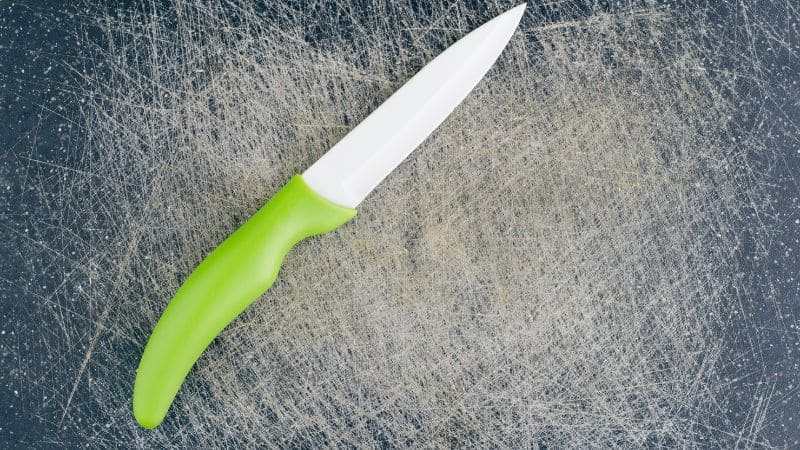
How Metal Detectors Work
Metal detectors are basic instruments used in various spheres of security, industry, and archaeology. Their function is simple — to detect hidden metallic objects — but the technology behind them is fascinating and essential for understanding why certain objects, such as ceramic knives, may set off an alert and why others may not.
Basic Principles of Metal Detection
At a fundamental level, metal detectors work via electromagnetic induction. Once activated, metal detectors produce an electromagnetic field around them. When a conductive or magnetic metal object moves within this field, it disturbs the energy which creates a signal to the operator that metal is present.
Several factors influence whether an object is detected, including:
- Material Composition – Metals like iron, steel and copper create stronger signals where as alloys or materials with low conductivity do create weaker signals.
- Object Size – Larger metallic items cause a greater disturbance which makes them easier to discover.
- Object Position – The position of the object in relation to the detector plays a role in the intensity of the signal. A flat held knife, for example, might give a weaker signal than one held vertically.
- Detector Sensitivity – Advanced detectors can detect small amounts of metal, while basic models may only respond to larger or more conductive targets.
Example: The detectors at airport checkpoints are tuned to detect small objects such as coins or belt buckles, while ignoring insignificant amounts of metal that may be found in clothing fibers or footwear.
Types of Metal Detectors
If metal detection were as simple as snapping your fingers, everyone would be doing it. And depending on the type of environment and level of security needed, there are also different types of metal detectors in use.
- Walk-Through Metal Detectors – These are the type of devices most often seen in airports, schools, and government buildings. Passengers step through a scanner and it looks for metallic thing on them.
- Handheld Wands – Typically used in conjunction with walk-through detectors, handheld wands can be used to closely inspect certain areas, as may be necessary in event security or stadium walkthroughs.
- Industrial Metal Detectors – These detectors are located in factories and processing plants, and help keep products safe by detecting stray metal in food, textiles and machinery.
- Ground-Based Detectors – Commonly used by treasure seekers and archeologists, these devices scan for metallic objects buried below ground by sweeping over the surface.
| Detector Type | Common Use | Sensitivity Level |
|---|---|---|
| Walk-Through | Airports, government buildings | High |
| Handheld Wand | Security screenings at events | Medium |
| Industrial | Manufacturing, food safety | Extremely High |
| Ground-Based | Archaeology, treasure hunting | Moderate to High |
Composition of Ceramic Knives
Ceramic knives have carved out a niche in both home kitchens and professional culinary environments. Their razor-sharp edges, lightweight build, and corrosion resistance make them a preferred alternative to traditional steel knives. But what sets them apart—and fuels the discussion around their detectability by metal detectors—is their unique composition.
Materials Used in Ceramic Knives
The core of any ceramic knife is its blade, typically crafted from zirconium oxide (zirconia). This advanced ceramic material is fired at temperatures exceeding 2,000 degrees Celsius, resulting in an exceptionally hard blade that rivals the sharpness of steel. Zirconia is non-metallic and non-magnetic, which is why ceramic knives are often thought to bypass standard electromagnetic detection.
- Blades – Made entirely of zirconium oxide, these blades are known for their ability to retain sharpness up to ten times longer than steel.
- Handles – While the blades are ceramic, handles are often made from plastic, composite materials, or metal reinforcements to enhance durability and ergonomics. Some high-end models incorporate stainless steel rivets or bolsters for balance, which increases their detectability.
Authoritative Insight: According to Kyocera Advanced Ceramics, one of the leading manufacturers of ceramic knives, their zirconia blades are engineered to be “second only to diamonds in hardness,” reinforcing their non-metallic yet highly durable nature.
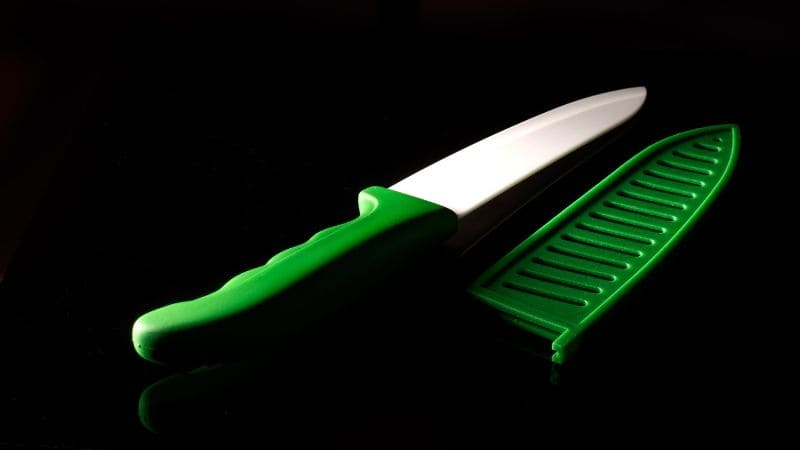
Comparison with Metal Knives
Ceramic knives are distinct from their metal counterparts in several key areas:
| Feature | Ceramic Knives | Metal Knives |
|---|---|---|
| Material | Zirconium oxide | Stainless steel, carbon steel |
| Weight | Lightweight | Heavier |
| Corrosion Resistance | Does not rust | Can rust without maintenance |
| Magnetic Properties | Non-magnetic | Magnetic |
| Edge Retention | Stays sharp longer | Requires regular honing and sharpening |
| Brittleness | Prone to chipping if dropped | More resistant to chipping |
The lightweight and corrosion-resistant properties of ceramic knives make them ideal for cutting fruits, vegetables, and boneless meats, while their brittleness limits their use in bone cutting or hard foods.
Can Ceramic Knives Be Detected by Metal Detectors?
The detectability of ceramic knives by metal detectors depends largely on their design and composition. While many ceramic fruit knives are marketed as non-metallic and undetectable, this isn’t always the case. Factors like metal rivets, screws, or handle reinforcements can significantly affect whether a ceramic knife triggers detection systems.
Factors Affecting Detectability
- Metal Components – Ceramic knives with metal bolsters or screws for structural reinforcement are detectable by standard electromagnetic detectors. Even small traces of metal can disrupt the electromagnetic field enough to set off an alert.
- Trace Elements – Some manufacturers incorporate microscopic steel particles into the ceramic mix during production. These trace elements enhance blade durability but increase the likelihood of detection.
- Handle Material – While the blade may be ceramic, metal-reinforced handles can trigger alarms, particularly in high-sensitivity detectors like those used in airports.
Authoritative Insight: According to Smiths Detection, a leader in security screening technology, modern metal detectors are sensitive enough to identify even small amounts of conductive material embedded in non-metallic objects. This underscores the growing capability of security systems to detect composite materials, including ceramic knives with metallic inclusions.
Situations Where Ceramic Knives Might Trigger Detection
- Knives with Metal Fasteners – Some ceramic knives feature small metallic parts, such as rivets or screws, used to attach the blade to the handle. These can easily set off alarms.
- Advanced Security Systems – Modern industrial-grade detectors and walk-through scanners used in high-security facilities can detect trace conductive materials in ceramic products.
- Airport Screening – Airport scanners, including X-ray and millimeter-wave scanners, are capable of detecting ceramic knives based on their density and shape, even if no metal is present.
Why Some Ceramic Knives Go Undetected
Despite the growing sophistication of metal detectors and security screening systems, some ceramic knives still manage to pass through undetected. This is largely due to the non-metallic composition of their blades and the absence of detectable conductive materials. However, the lack of detectability doesn’t always mean a knife is invisible to all forms of security.
Key Reasons Why Ceramic Knives Bypass Metal Detectors
Pure Ceramic Composition
- Knives made from 100% zirconium oxide contain no metal and thus fail to disrupt the electromagnetic field generated by metal detectors. This makes pure ceramic blades effectively invisible to standard walk-through and handheld detectors.
- Since zirconium oxide is both non-conductive and non-magnetic, metal detectors designed to identify ferrous or conductive materials are ineffective against these knives.
Minimal Trace Elements
- Some ceramic paring knives are produced without metal particles or rivets, ensuring the knife remains entirely non-metallic. Even if there are small amounts of trace materials, they often fall below the sensitivity threshold of most detectors.
- Lower-end or budget ceramic knives are more likely to avoid metal additives, increasing their chance of bypassing security.
Plastic or Composite Handles
- Many ceramic knives are paired with plastic or composite handles. These materials, being non-metallic, contribute to the knife’s overall undetectable profile in most metal detection scenarios.
- Even when reinforced with fiberglass or resin, these handle materials lack the conductive properties that metal detectors seek.
Detector Sensitivity Variations
- Not all metal detectors are calibrated to the same sensitivity level. Standard detectors at low-security venues might not pick up small metallic components, while high-sensitivity detectors in airports or secure facilities are more likely to detect ceramic knives with even the slightest metallic reinforcement.

Comparison: Pure Ceramic vs. Metal-Infused Ceramic Knives
| Feature | Pure Ceramic Knives | Metal-Infused Ceramic Knives |
|---|---|---|
| Detectability by Metal Detectors | Low | High |
| Material Composition | 100% Zirconium Oxide | Zirconium with Steel Particles/Rivets |
| Handle Material | Plastic/Composite | Metal Bolsters or Reinforced Handles |
| Corrosion Resistance | Complete | High, but metal parts can corrode |
| Durability | High, but brittle | Higher, less prone to chipping |
| Cost | Lower | Higher (due to added materials) |
Real-World Examples
- Pure Ceramic Knife – A cooking knife made entirely of zirconium oxide with a plastic handle. This knife can easily bypass standard metal detectors but will likely be flagged by X-ray scanners.
- Metal-Infused Ceramic Knife – A ceramic utility knife featuring stainless steel rivets securing the blade to the handle. While the blade may pass unnoticed, the rivets trigger detection.
Limitations of Undetectable Ceramic Knives
While ceramic knives can evade metal detectors, they are not immune to more advanced detection technologies:
- X-ray Machines – Clearly reveal the knife’s shape and density, regardless of material composition.
- Millimeter-Wave Scanners – Used at airports, these scanners detect non-metallic items based on body shape discrepancies.
- Tactile Inspections – Security personnel may identify ceramic knives during physical searches or pat-downs.
Fact: A study by the Transportation Security Administration (TSA) revealed that even knives made entirely of ceramic were detected by full-body scanners and X-ray technology, reinforcing the importance of layered security.
Security and Detection Measures
To counter the rising popularity of ceramic knives, security agencies have improved detection methods. Pure ceramic blades, on the other hand, can bypass traditional metal detectors.
Airport and Public Venue Screening
Layered detection systems are common at airports and high-security venues that go beyondthe traditional metal detectors. These steps are important to provide the identification of ceramic knives and other non-metal objects.
- X-ray Scanners – A staple at all airports, these machines can identify ceramic blades by their structure and substance, even when they´re metallic-free. The high-contrast image shows the silhouette of hidden objects.
- Millimeter-Wave Scanners – These are commonly found in full-body scanners; they can find objects concealed under clothes by scanning for density anomalies in front of the body. Ceramic knives are non-metallic, but they will light up in the scanner.
- Advanced Imaging Technology (AIT) – This technology creates a detailed image of a passenger’s body to highlight hidden objects made of ceramic, plastic, and composite materials.
| Technology | Detects Ceramic Knives? | Common Usage |
|---|---|---|
| X-ray Scanners | Yes | Airports, secure facilities |
| Millimeter-Wave Scanners | Yes | Airports, public venues |
| Metal Detectors | Sometimes | Schools, government buildings |
| Handheld Wands | Rarely | Events, secondary security |
Practical Applications and Uses of Ceramic Knives
Ceramic knives are suitable for use in both home and professional cooking and they offer some distinct advantages over metal knives.
Kitchen and Culinary Use
- The ceramic knife is ideal for cutting fruits, vegetables, and boneless meats. Their thin, lightweight blades make precision cuts without the same dulling as steel.
- Professional chefs like to use ceramic knives for preparing delicate foods that oxidize quickly since ceramic doesn’t stain or rust.
Industrial and Craft Applications
- Ceramic blades are sexually use in industries like textiles and electronics for cutting of fibreglass, fabric and the fine wires. They are also non-conductive which make them perfect where metal might interfere with machinery.
- In sculpture, modeling and fine material, artisans and crafters use ceramic blades for precise cutting.
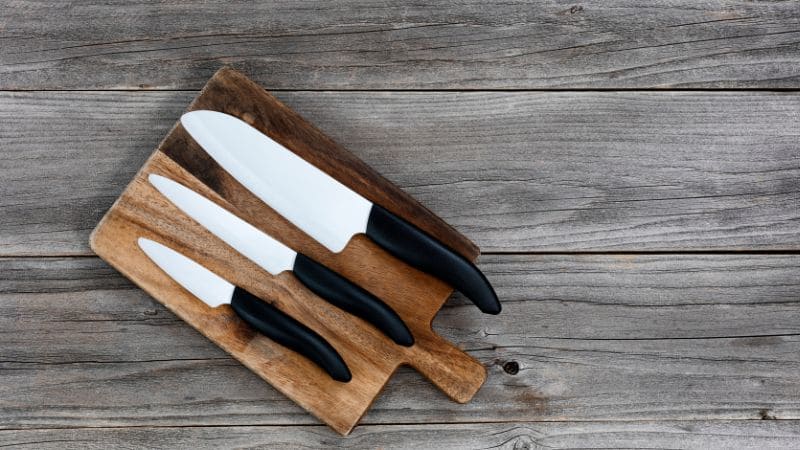
FAQ About Ceramic Knives and Metal Detectors
Can ceramic knives pass through airport security undetected?
Some pure ceramic knives without metal parts can occasionally avoid traditional metal detectors. At the same time, the X-ray scanners and millimeter-wave tech used at airports can find ceramic knives according to their shape and density. Even if they don’t set off alarms, they will almost certainly be identified during imaging scans.
Why Are Some Ceramic Knives Metal Detectable?
Most ceramic knives have metal rivets, screws, or bolster that helps secure the handle or blade. Sensitive detectors can be activated by minute quantities of metallic powder in the blade.
Can ceramic knives bypass security in government buildings?
Most government facilities are equipped with multi-layered detection and identification systems, including X-ray machines and advanced imaging technology, which are capable of identifying ceramic knives. Sure, pure ceramic knives may pass through basic detect all but they won’t pass security cycle detectors.
What should I do if I need to transport a ceramic knife?
This should always be in your check luggage when traveling by air visit. This should protect vulnerable assets if moved to safe locations and disclosed to security personnel so as to avoid быть confiscated,出没 or sought out by law enforcement..
Can ceramic knives break easily?
Yes, ceramic knives are brittle and can chip or break if dropped or misused. Precision Cutting: They are excellent at the precision cutting but do not work as well for cutting bones, frozen foods, hard surfaces, etc.
Conclusion
Ceramic knives are highly valued for their durability and precision, but their detectability by metal detectors depends on their composition. Pure ceramic blades often bypass detectors, while metal-infused versions are more likely to be flagged by security systems, ensuring thorough screening in sensitive environments.
